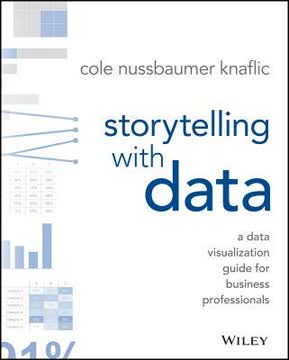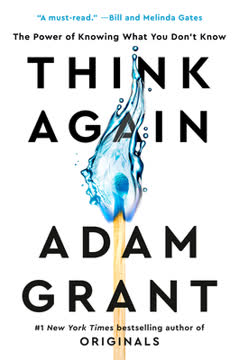Key Takeaways
1. Employee Experience: The New Frontier in Organizational Success
"Work is a team sport that relies on multiple people and groups coming together to achieve something."
Shift in focus. Organizations are realizing that to thrive in the modern business landscape, they must transition from creating places where employees need to be to environments where they genuinely want to be. This paradigm shift is driven by the fierce competition for talent, changing workforce demographics, and the realization that engaged employees are more productive, innovative, and loyal.
Defining employee experience. Employee experience encompasses the entire journey an employee has within an organization, from recruitment to exit. It's about creating an environment that considers employees' needs, wants, and expectations, aligning them with the organization's goals and culture. This approach goes beyond traditional engagement strategies, focusing on holistic experiences that make work meaningful, enjoyable, and fulfilling.
Key components of employee experience:
- A clear sense of purpose and connection to the organization's mission
- Opportunities for growth and development
- A supportive and inclusive work environment
- Tools and technologies that enable productivity and collaboration
- Physical spaces that inspire and facilitate different work styles
2. The Three Pillars of Employee Experience: Culture, Technology, and Physical Space
"Everything and anything your organization will ever do concerning employee experience will fall into these three environments."
Culture. The cultural environment is the invisible force that shapes behavior, attitudes, and interactions within an organization. It encompasses values, leadership styles, communication patterns, and the overall "feel" of working at a company. A positive cultural environment fosters trust, collaboration, and a sense of belonging.
Technology. The technological environment refers to the tools and platforms employees use to perform their jobs. In today's digital age, having user-friendly, efficient, and integrated technology is crucial for employee satisfaction and productivity. This pillar focuses on providing employees with consumer-grade technology that enhances their work experience.
Physical space. The physical environment is the tangible workspace where employees spend their time. It includes office design, ergonomics, amenities, and the overall aesthetic of the workplace. A well-designed physical space can boost creativity, collaboration, and employee well-being.
Key aspects of each pillar:
- Culture: Leadership, values, communication, recognition, diversity and inclusion
- Technology: User-friendly interfaces, mobile accessibility, collaboration tools, AI and automation
- Physical space: Flexible workspaces, ergonomic furniture, natural light, communal areas
3. From Utility to Experience: The Evolution of Workplace Design
"Employees need access to environments that enable them to do their best work."
Historical perspective. Traditionally, workplaces were designed with a utilitarian mindset, focusing solely on providing the basic tools and resources needed to get the job done. This approach often resulted in uninspiring, one-size-fits-all environments that prioritized efficiency over employee well-being and satisfaction.
Modern approach. Today's forward-thinking organizations are reimagining workspaces as "employee experience centers." These spaces are designed to cater to various work styles, foster collaboration, and reflect the company's values and culture. The focus has shifted from mere functionality to creating environments that inspire, engage, and support employees in multiple ways.
Key elements of experience-centric workplace design:
- Flexible layouts that accommodate different work modes (focus, collaboration, learning, socializing)
- Biophilic design elements that bring nature indoors
- Technology-enabled spaces that support seamless digital and physical collaboration
- Wellness areas for relaxation, meditation, or exercise
- Customizable workstations that adapt to individual preferences
4. People Analytics: The Foundation of Employee-Centric Organizations
"All people decisions at Google are based on data and analytics."
Data-driven decision making. People analytics involves using data and statistical methods to understand and improve various aspects of human resources and employee management. This approach enables organizations to make more informed decisions about their workforce, moving beyond intuition and gut feelings to evidence-based strategies.
Applications of people analytics. Organizations can leverage people analytics to gain insights into various aspects of the employee experience, from recruitment and retention to performance and engagement. By analyzing patterns and trends in employee data, companies can identify areas for improvement and develop targeted interventions to enhance the overall employee experience.
Key areas where people analytics can make an impact:
- Predicting and preventing employee turnover
- Identifying factors that contribute to high performance
- Optimizing learning and development programs
- Improving diversity and inclusion initiatives
- Enhancing employee well-being and work-life balance
5. The Employee Experience Design Loop: A Continuous Improvement Model
"Employees participate in PD@GE (the app and desktop tool) by capturing touchpoint conversations with managers, sending insights to colleagues, and continuously tracking or modifying their priorities."
Iterative process. The Employee Experience Design Loop is a cyclical approach to continuously improving the employee experience. It involves gathering feedback, analyzing data, designing solutions, implementing changes, and then starting the process again. This iterative model ensures that organizations remain responsive to evolving employee needs and expectations.
Key stages. The loop typically consists of five stages: Respond (gather feedback), Analyze (extract insights), Design (create solutions), Launch (implement changes), and Participate (employees engage with new initiatives). This process encourages ongoing dialogue between employees and the organization, fostering a culture of continuous improvement and adaptation.
Benefits of the Employee Experience Design Loop:
- Keeps the organization agile and responsive to employee needs
- Encourages employee involvement in shaping their work environment
- Allows for rapid testing and refinement of new initiatives
- Builds trust through transparent communication and action
6. Moments that Matter: Personalizing the Employee Journey
"Instead of thinking of a traditional employee life cycle, it's more valuable and effective to think of moments that matter or moments of impact."
Beyond the lifecycle. Traditional approaches to employee experience often focus on broad stages of the employee lifecycle (recruitment, onboarding, development, etc.). The "moments that matter" approach recognizes that employees' experiences are shaped by specific, impactful events throughout their tenure with an organization.
Types of moments. There are three categories of moments that matter: specific (e.g., first day at work, getting promoted), ongoing (daily interactions with colleagues and managers), and created (company-wide events or initiatives). By identifying and optimizing these key moments, organizations can create more personalized and meaningful employee experiences.
Examples of moments that matter:
- Onboarding and first impressions
- Receiving recognition for a job well done
- Navigating a challenging project or crisis
- Experiencing a significant life event (e.g., having a child, losing a loved one)
- Celebrating company milestones or achievements
7. The Business Value of Exceptional Employee Experiences
"Experiential Organizations had 20 percent fewer employees, 40 percent lower turnover, 1.5× the employee growth, 2.1× the average revenue, 4.4× the average profit, 2.9× more revenue per employee, and 4.3× more profit per employees when compared with nonExperiential Organizations."
Tangible benefits. Organizations that prioritize employee experience see significant improvements in various business metrics. These benefits extend beyond traditional HR measures like engagement and retention, impacting overall business performance and financial outcomes.
Competitive advantage. In today's knowledge-based economy, creating exceptional employee experiences can be a key differentiator in attracting and retaining top talent. Companies known for their great employee experiences often become "employers of choice," giving them a significant advantage in the war for talent.
Key business outcomes of investing in employee experience:
- Increased productivity and innovation
- Higher customer satisfaction and loyalty
- Stronger employer brand and talent attraction
- Improved financial performance (revenue and profit)
- Greater adaptability and resilience in the face of change
8. Building an Experiential Organization: From Theory to Practice
"You have to care, really care."
Leadership commitment. Creating an exceptional employee experience starts with genuine care and commitment from the top. Leaders must truly believe in the value of prioritizing employee experience and be willing to invest time, resources, and effort into making it a reality.
Practical steps. Building an experiential organization involves a series of deliberate actions and initiatives. This includes defining a compelling reason for being, building a robust people analytics function, creating a dedicated experience team, implementing feedback mechanisms, and focusing on the key elements of culture, technology, and physical space.
Key steps in building an experiential organization:
- Define a clear and inspiring reason for being
- Invest in people analytics capabilities
- Create a cross-functional employee experience team
- Implement real-time feedback mechanisms
- Design and optimize moments that matter
- Continuously improve culture, technology, and physical spaces
- Measure and communicate the impact of employee experience initiatives
Last updated:
FAQ
What's The Employee Experience Advantage about?
- Focus on Employee Experience: The book emphasizes the importance of creating a positive employee experience to attract and retain talent. It suggests a shift from traditional models to a holistic approach prioritizing employee satisfaction.
- Three Key Environments: Jacob Morgan identifies three crucial environments: the physical, technological, and cultural environments, each playing a significant role in shaping employee perceptions.
- Business Impact: Investing in employee experience can lead to improved business outcomes, such as increased productivity, innovation, and employee engagement.
Why should I read The Employee Experience Advantage?
- Relevance to Modern Workplaces: As workplaces evolve, the book provides insights into adapting to changing employee expectations and technological advancements.
- Actionable Frameworks: It offers practical strategies and frameworks for organizations to implement, making it a valuable resource for HR professionals and business leaders.
- Research-Backed Insights: The book's recommendations are based on extensive research and interviews with executives from leading organizations, adding credibility to its insights.
What are the key takeaways of The Employee Experience Advantage?
- Shift in Focus: Organizations need to transition from viewing employees as mere resources to valuing their experiences and well-being.
- ACE Framework: The book introduces the ACE framework for the technological environment, focusing on availability, consumer-grade technology, and aligning employee needs with business requirements.
- CELEBRATED Culture: Morgan outlines ten attributes that contribute to a positive culture, such as feeling valued and having a sense of purpose.
What are the best quotes from The Employee Experience Advantage and what do they mean?
- "The war for talent has never been fiercer.": Highlights the competitive landscape in attracting and retaining skilled employees, emphasizing the need to prioritize employee experience.
- "Employee experience is the intersection of employee expectations, needs, and wants and the organizational design of those expectations, needs, and wants.": Suggests that understanding and addressing employee needs is vital for creating a positive work environment.
- "Organizations have always assumed that people needed to work there.": Calls for a shift in perspective, recognizing that employees have choices and should want to work for an organization.
How does The Employee Experience Advantage define employee experience?
- Holistic Approach: Employee experience is defined as the overall perception employees have of their workplace, shaped by their interactions with the organization.
- Intersection of Expectations and Design: It is created at the intersection of employee expectations, needs, and wants, and the organizational design that addresses these factors.
- Impact on Engagement: A positive employee experience is linked to higher levels of engagement, satisfaction, and retention.
What is the ACE framework in The Employee Experience Advantage?
- Availability to Everyone: Ensures all employees have access to the same technologies and tools, fostering inclusivity and collaboration.
- Consumer-Grade Technology: Advocates for using modern, user-friendly technologies that employees would choose in their personal lives.
- Employee Needs vs. Business Requirements: Prioritizes understanding how employees work and what they need to succeed, rather than solely focusing on technical specifications.
What are the three employee experience environments discussed in The Employee Experience Advantage?
- Physical Environment: Includes the actual workspace, such as office layout and design, which can enhance creativity and collaboration.
- Technological Environment: Encompasses the tools and technologies employees use, focusing on providing user-friendly, accessible technologies.
- Cultural Environment: Refers to the values, beliefs, and behaviors that shape the workplace atmosphere, fostering inclusivity and a sense of belonging.
How can organizations improve their employee experience according to The Employee Experience Advantage?
- Invest in Technology: Prioritize providing consumer-grade technology accessible to all employees to enhance productivity.
- Create a CELEBRATED Culture: Focus on attributes like feeling valued and promoting diversity to foster a positive work environment.
- Design for Employee Needs: Actively seek feedback from employees to guide decisions about workplace design and practices.
What role does leadership play in shaping employee experience in The Employee Experience Advantage?
- Setting the Tone: Leaders establish the organizational culture and values that influence employee experience.
- Championing Employee Experience: Leaders should advocate for initiatives that prioritize employee experience, inspiring others to follow suit.
- Encouraging Open Communication: Effective leaders foster an environment where employees feel comfortable sharing ideas and feedback.
How does The Employee Experience Advantage address the war for talent?
- Understanding Employee Expectations: Emphasizes recognizing and addressing evolving employee expectations to attract and retain top talent.
- Creating a Desirable Workplace: Focuses on creating environments where employees genuinely want to work, shifting from a transactional relationship to one based on mutual value.
- Long-Term Investment: Argues that investing in employee experience is a long-term necessity for organizational success.
What are the nine types of organizations identified in The Employee Experience Advantage?
- Inexperienced Organizations: Do not actively invest in employee experience and struggle with attracting and retaining talent.
- Emerging Organizations: Focus on one of the three environments but not all, in the process of improving their employee experience.
- Experiential Organizations: Excel in all three environments, creating a workplace where employees want to show up, leading to high engagement and retention rates.
How does The Employee Experience Advantage suggest organizations can measure employee experience?
- Employee Experience Score (EES): Introduces a scoring system based on 17 attributes reflecting employee experience.
- Feedback Mechanisms: Emphasizes continuous feedback through surveys and discussions to gauge satisfaction and identify improvement areas.
- People Analytics: Utilizes data analytics to track engagement, turnover rates, and satisfaction levels, providing insights into the effectiveness of initiatives.
Review Summary
The Employee Experience Advantage receives mostly positive reviews, with readers praising its research-based approach and practical frameworks for improving workplace environments. Many find the book's focus on physical space, culture, and technology insightful. Some criticize the emphasis on tech companies and lack of diverse industry examples. Readers appreciate the book's ideas on creating positive employee experiences but note it can be repetitive. Overall, it's considered a valuable resource for HR professionals and leaders seeking to enhance employee engagement and retention.
Similar Books










Download PDF
Download EPUB
.epub digital book format is ideal for reading ebooks on phones, tablets, and e-readers.





